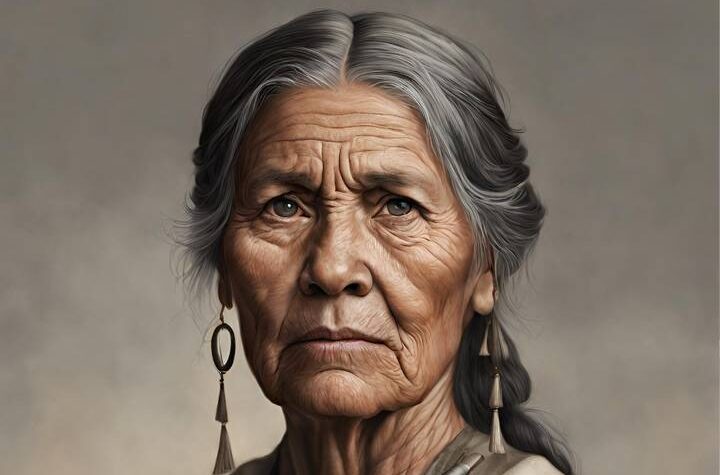Famous Melungeons have an often-overlooked history. Their heritage, with European, African, and Native American roots, offers a diverse collection of experiences and stories that enrich our broad view of American history. This diversity gives us insight into complex racial interactions in America’s past and shows how cultural traditions endure.
Melungeons actively preserve their distinctive cultural heritage. They keep the customs and tales of their forebears, a group known for its multi-racial mix, primarily living in the Appalachian region of the United States, alive. Through storytelling, education, and local gatherings, they reinforce their identity and ensure it continues.
The most respected Melungeons serve as teachers and champions of diversity. They should deeply understand their lineage, take pride in their identity, and skillfully share their background with others. They aim to acknowledge their history while encouraging acceptance and understanding between different cultures.
Learn about the famous Melungeons and how they shape our cultural landscape.
DruAnna Williams Overbay
DruAnna Williams Overbay grew up in the Melungeon community and faced discrimination from her early days. She attended Warren Wilson College in Asheville, where she overcame these challenges and pursued a remarkable teaching career that spanned 46 years. Overbay’s devotion to education sheds light on her community’s struggles and achievements.
Wayne Winkler
As an East Tennessee State University professor and an established author, Wayne Winkler learned he was part of the Melungeon heritage when he was 12. This discovery sparked a deep interest in his people’s history and culture. Through his book “Walking Toward the Sunset: The Melungeons of Appalachia,” Winkler has made significant strides in understanding Melungeon identity.
Winkler’s story helped people take pride in their Melungeon background and encouraged conversations about their lineage. He compares the Melungeon experience with the broader Appalachian culture, suggesting that both share a growing sense of pride.
Heather Andolina
Heather Andolina, leader of the Melungeon Heritage Association, only recently found out she was of Melungeon descent. DNA tests revealed that her grandmother, who claimed Cherokee ancestry, was a Melungeon.
Andolina and her relatives are creating a documentary called “Infamous Characters, Notorious Villains,” delving into their Melungeon history and uncovering compelling tales. The documentary aims to tell the distinct story of the Melungeon community. It highlights their culture and how discrimination has touched lives like Andolina’s grandmother.
Alma Shippey
Alma Shippey is a significant historical figure, as she was the first black student to attend Warren Wilson University in 1952. This was two years before the groundbreaking Brown v. Board of Education case. Her enrollment at the college was a crucial step in breaking down racial barriers in education during that tough time. Shippey’s bravery and resolve cleared the path for more inclusivity at Warren.
Mary Ramsey Cameron
Mary Ramsey Cameron found her Melungeon heritage through her grandmother. She seldom spoke about their lineage but confidently mentioned ” Melungeon ” to Cameron. This disclosure was crucial for Cameron’s understanding of her family’s lineage.
Her story reflects the silence and discrimination that surrounds Melungeon identity over time. Cameron’s experience resembles many other Melungeons now researching and accepting their mixed heritage. She hopes to lead by example in acceptance and understanding among different races.
Tammy Stachowicz
Tammy Stachowicz works as a diversity instructor at Davenport University in Michigan, adding a personal touch to discussing Melungeon identity. Raised on a Michigan farm, her family lived distinctly from others by growing and preserving their food, which often led to teasing for Stachowicz.
Stachowicz took this sense of difference as an incentive to explore her roots and dive into her Melungeon heritage through her thesis. She argues against linking physical traits with Melungeonness and believes life experiences shape our cultural identities. Her viewpoints help dispel stereotypes of what it means to be a Melungeon beyond just looks.
Brent Kennedy
Brent Kennedy played a crucial role in sparking interest in Melungeon’s studies. Falling ill in 1988, he was driven to investigate his family’s past and explore Melungeon history. A former University of Virginia administrator, Kennedy moved back to Wise, left his job, and dedicated himself to uncovering the mysterious origins of the Melungeon people.
In 1997, he wrote a controversial book titled “The Melungeons: The Resurrection of a Proud People; An Untold Story of Ethnic Cleansing in America,” which presented various theories on Melungeon ancestry. Despite facing critique, Kennedy sees his work as a way to liberate and affirm Melungeon identity by highlighting their often-ignored tri-racial isolation status.
William Isom
William Isom coordinates the Community Media Organizing Project and researches Melungeon history. Coming from Tennessee’s Cumberland Gap region with a family history of Melungeon tales, Isom is pioneering academic and genealogical studies in his lineage. He has become a vital contributor to clarifying Melungeon’s origins.
His work hints that Melungeons first appeared during England’s exploration of the Appalachian mountains in the 17th century. Isom persists in his search for their history despite discrimination and draws strength from his heritage to deepen his understanding of the Melungeon narrative in northeast Tennessee.
Bill Fields
Bill Fields, the one behind the Melungeon newsletter Under One Sky, is another influential person in the Melungeon movement.
Fields highlights the Melungeons’ class struggles and racial issues. He stresses the importance of them telling their own stories. He fights against stereotypes about Melungeons, especially Appalachia’s crude and lacking education.
Fields believes that Melungeons are starting to take charge of their story, moving away from historical portrayals by politicians using set-up photos that enforce negative images. Through his work with publications like Under One Sky, Fields helps craft a fresh narrative that challenges the usual beliefs about Melungeons in Appalachia.
Tucker Davis
Tucker Davis, a freelance journalist from Buchanan County, shares insightful perspectives on the complex identity of the Melungeon people. Growing up in Grundy, a rural mountain area, Davis recalls hearing various stories about the Melungeons. These accounts included claims of African or Native American ancestry and unusual characteristics like a distinct bone knot at the back of the skull.
Davis points out how challenging it is to pinpoint a clear-cut definition of Melungeons due to their historically ambiguous background in Appalachia, reflecting the group’s complexity and varying nature.
Kathy Lyday
At Elon University, Kathy Lyday has explored how Melungeons have been depicted in literature and the media for over a hundred years. She is a consistent voice at Melungeon Heritage Association conferences, where she helps build knowledge about Melungeon identity. Through her academic pursuits, Lyday plays a critical role in highlighting Melungeon history and supports ongoing discussions about their intricate legacy.




